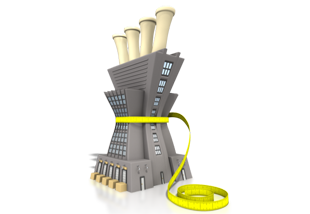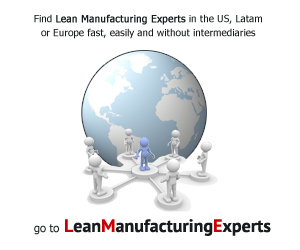Lean Manufacturing
What is Lean Manufacturing?
 Lean manufacturing, Lean Enterprise, or lean production, often simply, “lean“, is a production philosophy that considers the expenditure of resources in any aspect other than the direct creation of value for the end customer to be wasteful, and thus a target for elimination. Working from the perspective of the client who consumes a product or service, “value” is any action or process that a customer would be willing to pay for.
Lean manufacturing, Lean Enterprise, or lean production, often simply, “lean“, is a production philosophy that considers the expenditure of resources in any aspect other than the direct creation of value for the end customer to be wasteful, and thus a target for elimination. Working from the perspective of the client who consumes a product or service, “value” is any action or process that a customer would be willing to pay for.
Essentially, lean is centered on making obvious what adds value by reducing everything else. Lean manufacturing is a management philosophy derived mostly from the Toyota Production System (TPS) (hence the term Toyotism is also prevalent) and identified as “lean” only in the 1990s. TPS is renowned for its focus on reduction of the original Toyota seven wastes to improve overall customer value, but there are varying perspectives on how this is best achieved. The steady growth of Toyota, from a small company to the world’s largest automaker, has focused attention on how it has achieved this success.
Lean principles are derived from the Japanese manufacturing industry. The term was first coined by John Krafcik in his 1988 article, “Triumph of the Lean Production System,” based on his master’s thesis at the MIT Sloan School of Management.Krafcik had been a quality engineer in the Toyota-GM NUMMI joint venture in California before coming to MIT for MBA studies. Krafcik’s research was continued by the International Motor Vehicle Program (IMVP) at MIT, which produced the international best-seller book co-authored by Jim Womack, Daniel Jones, and Daniel Roos called The Machine That Changed the World.A complete historical account of the IMVP and how the term “lean” was coined is given by Holweg (2007).
For many, lean is the set of “tools” that assist in the identification and steady elimination of waste (muda). As waste is eliminated quality improves while production time and cost are reduced. A non exhaustive list of such tools would include: SMED, Value Stream Mapping, Five S, Kanban (pull systems), poka-yoke (error-proofing), Total Productive Maintenance, elimination of time batching, mixed model processing, Rank Order Clustering, single point scheduling, redesigning working cells, multi-process handling and control charts (for checking mura).
There is a second approach to lean Manufacturing, which is promoted by Toyota, called The Toyota Way, in which the focus is upon improving the “flow” or smoothness of work, thereby steadily eliminating mura (“unevenness”) through the system and not upon ‘waste reduction’ per se. Techniques to improve flow include production leveling, “pull” production (by means of kanban) and the Heijunka box. This is a fundamentally different approach from most improvement methodologies, which may partially account for its lack of popularity.
The difference between these two approaches is not the goal itself, but rather the prime approach to achieving it. The implementation of smooth flow exposes quality problems that already existed, and thus waste reduction naturally happens as a consequence. The advantage claimed for this approach is that it naturally takes a system-wide perspective, whereas a waste focus sometimes wrongly assumes this perspective.
Both lean and TPS can be seen as a loosely connected set of potentially competing principles whose goal is cost reduction by the elimination of waste.These principles include: Pull processing, Perfect first-time quality, Waste minimization, Continuous improvement, Flexibility, Building and maintaining a long term relationship with suppliers, Autonomation, Load leveling and Production flow and Visual control. The disconnected nature of some of these principles perhaps springs from the fact that the TPS has grown pragmatically since 1948 as it responded to the problems it saw within its own production facilities. Thus what one sees today is the result of a ‘need’ driven learning to improve where each step has built on previous ideas and not something based upon a theoretical framework.
Toyota’s view is that the main method of lean is not the tools, but the reduction of three types of waste: muda (“non-value-adding work”), muri (“overburden”), and mura (“unevenness”), to expose problems systematically and to use the tools where the ideal cannot be achieved. From this perspective, the tools are workarounds adapted to different situations, which explains any apparent incoherence of the principles above.

 News, training, experts opinion, bibliography, software and everything about Lean world.
News, training, experts opinion, bibliography, software and everything about Lean world.
